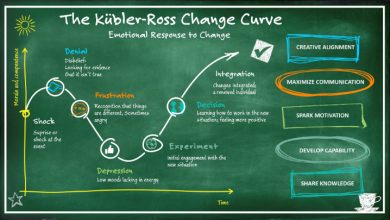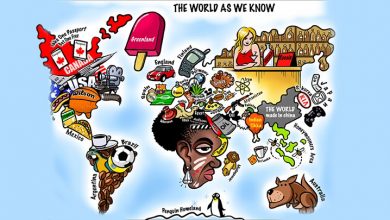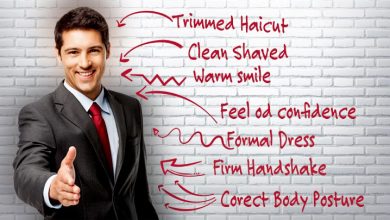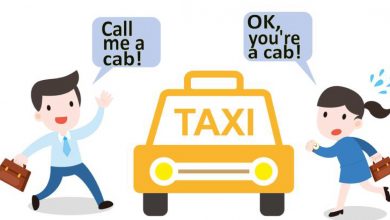Principles and methods for human rights education
Without effective human rights education, the declaration of human rights remains just words on paper to be perhaps implemented by higher authorities other than ourselves. This can make human rights a distant, unrelatable and perhaps even irrelevant concept. However, with effective human rights education, the topic can come to life and become a part of us and our every day lives. Compass 2012 is a very comprehensive manual for Human Rights Education created by the Council of Europe, and it is the basis for this article. While Compass has numerous activities that can be implemented in Human Rights Education, this article focuses more on the overall principles/methods to use in Human Rights education regardless of the activities.
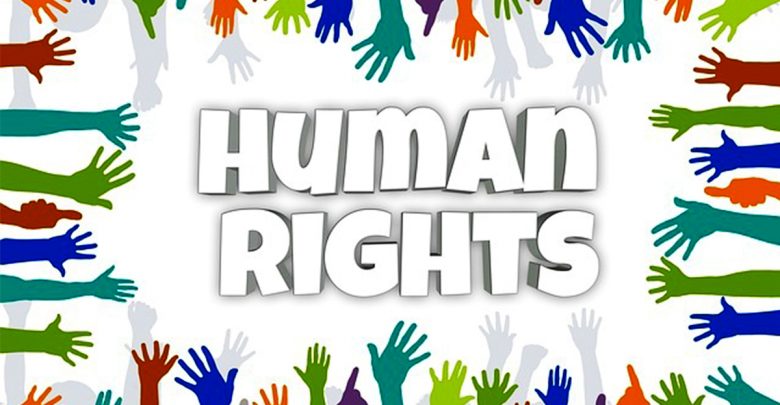
Why did I choose this tool? I liked how comprehensive and yet nuanced Compass 2012 was, it seemed to really bear in mind the mindset and needs of the practitioner and believe it provides a very strong basis for human rights education, both in terms of principles, general knowledge and practical activities.
How does this apply to being a trainer? This article clearly adds value to anyone who is directly providing human rights education, while at the same time the principles used in human rights education are actually very similar to those ideally used in any kind of non-formal education. It seems to me that human rights education and non-formal education are built from the same base, so in essence, these principles are a useful knowledge (or reminders) for non-formal education trainers working with any topic.
Main content:
The following is an overview of the kind of principles and methods to be implemented in Human Rights Education. It is based on the principles that can be found in Compass 2012, with additional commentary from the author of the article.
The pedagogical basis of HRE
“Knowing about human rights is not enough; people must also develop skills and attitudes to act together to defend human rights, and they must use their heads, hearts and hands to bring about the personal and social changes necessary for the creation of a global culture of human rights.”
The fact that there is a bill of rights and that there are courts around the world with the mandate of protecting and defending human rights means very little when it comes to the individual’s rights being respected and protected. For this reason, readily available and accessible education on human rights needs to play a much more prominent role if we wish to create cultures in which human rights are sustainably and naturally protected.
The following elements can ensure a successful human rights education experience.
Holistic learning
“Human rights issues concern the whole of a person (body, mind and soul) and all dimensions of life from cradle to grave. The whole person lives in the whole world where everything is interrelated; human rights education necessarily involves a holistic learning approach. Holistic learning promotes the development of the whole person, their intellectual, emotional, social, physical, artistic, creative and spiritual potentials. Holistic learning also implies that learning takes place in a social context that encompasses all everyday experiences; it is, therefore, interdisciplinary and cuts across the traditional subjects in school curricula.
A holistic approach also means that we seek to address and involve the cognitive, practical and attitudinal dimensions of learning, that is, not only what people learn, but also how to apply their learning in their attitudes or behavior and how to apply it in action for human rights, alone or with others.
Related to holistic learning, is also differentiated learning. The learning activities in Compass are designed to address a range of learning styles and different intelligences and teach to both cognitive and affective domains.”
The reason why holistic learning is so important in human rights education is that merely acquiring the knowledge of what human rights are is far from sufficient. There are other elements involved, such as respect and care for humankind, empathy, and the motivation to implement human rights in everyday life perhaps even beyond what is outlined in the declaration of human rights. This requires the engagement not only of the mind but also of the heart (attitude and behavior).
Some of the methods that can work well for holistic learning are storytelling and art. An external person coming to the training set to tell their story, or watching a filmed version of a story (or movie) can help the participants to connect emotionally with these people, who have experienced some form of suffering, that the participants have never experienced personally. This can be a source of inspiration to fight for human rights and prevent the suffering of others.
Without holistic learning, human rights education can become very dry and legalistic. With holistic learning, it can come to life through incorporating also our imagination and our emotions, which in some cases can enable us to learn even more effectively and especially to remember what we have learned.
Note: If you are using methods or material that appeals to the emotions, make sure that you give participants the opportunity to express and let go of the negative emotions at the end of the session/day so that they don’t remain in a state of “heaviness” that could negatively affect their learning process and wellbeing. Always make sure to end the process on a high note, returning to a sense of hope and motivation for the future.
Open-ended learning
“Open-ended learning is structured so that multiple/complex answers to problems are not only possible but expected. Participants are not steered towards one “right” answer which makes sense, because life is not black and white and ambiguity is a fact of the world we live in. Open-ended learning encourages self-confidence to express opinions and critical thinking. This is essential in human rights education because human rights issues are bound to result in different opinions and understandings; it is therefore important for the learners to learn together but still be free to disagree or come to opposite conclusions or points of view.”
It is important to note that while the declaration of human rights is one system of codifying human rights, it is not the only one and it is certainly not the first. Many religions will have detailed explanations of “human rights” and how they are expected to be upheld. In Christianity and Judaism “the ten commandments” can be seen as one such example, while in Islam there are many verses that outline the rights of men, women and children, what behavior towards them is acceptable and what behavior isn’t. At the end of the day, it shouldn’t matter what someone’s “source of information and motivation” on human rights is. What matters is that they are committed to upholding, respecting and defending the human rights of all individuals. And although this respect must extend to all regardless of their religion or belief system, it is possible that for some the motivation and instruction to do so can stem from their own religion or belief system.
Values clarification
“Participants are given opportunities to identify, clarify and express their own beliefs and values and to confront them with others in a safe framework based on the dignity of every human being, freedom of thought and expression, and the respect for others’ opinions.”
Participants must be given the chance to link human rights education to their existing values and in this way make sense of human rights in their own way. If this step is skipped and human rights education is merely delivered by a trainer, the results will be superficial at best. It will cause the notion and practice of human rights to remain a foreign concept that should be implemented, rather than an internalized concept that becomes part of the participants’ nature and automated behaviors.
Participation
“Participation in HRE means that young people take part in making decisions about what and how they are going to learn about human rights. Through participation, young people develop various competencies including those of decision making, listening, empathy with and respect for others, and taking responsibility for their own decisions and actions.
Thus HRE must let young people decide when, how and what topics they wish to work on. It means that the leader or teacher’s role is one of a facilitator, guide, friend or mentor, not one of an instructor who imparts knowledge or decides and controls what is to be learned and how.
The activities in non-formal HRE education include active involvement; one should be active and engaged; one cannot sit back and be a passive observer. If the learners/participants are not taking a full part in the activity it may be better to postpone it or to stop it and ask them about their reasons for non-participation. This, too, is part of human rights education.
Participation requires a supportive environment which encourages learners/participants to take responsibility for the activities and processes they are involved in. It is important to be transparent and honest with participants – also about the limits of participation. It is preferable to announce limits to participation than to manipulate the situation or simulate participation.”
Because of its nature, human rights must be learned through participation and practice. If human rights education is merely delivered to participants, it creates the understanding that we are merely passive spectators of the implementation, or violation, of human rights. A more effective way of looking at it is that, in our own lives and communities, we are the main actors who will determine whether human rights are upheld or violated. Transforming human rights from a topic in which participants can remain passive commentators to one where they can be active contributors is an essential step in effective human rights education.
Always give participants the opportunity to internalize the information/concepts being presented to them. Non-formal education provides multiple methods for this, such as role-playing, games, and perhaps even small group discussions aimed at bringing the information/concepts closer to home. Without this element of internalization, human rights education becomes an intellectual activity that can so quickly be forgotten and left behind when the individual is actually faced with a real-life situation where the human rights principles should be implemented.
Co-operative learning
“Learning to respect others and to work together is one aim of HRE. In co-operative learning people learn through working together to seek outcomes that are beneficial both to themselves and to all members of the group. Co-operative learning promotes higher achievement and greater productivity, more caring, supportive, and committed relationships and greater social competence and self-esteem. This is in contrast to what happens when learning is structured in a competitive way. Competitive learning often tends to promote self-interest, disrespect for others and arrogance in the winners, while the losers often become demotivated and lose self-respect.”
Through effective human rights education, we can see each other as contributors and collaborators working together towards a better world and not merely as individuals or competitors. Upholding human rights isn’t something that can be effectively done by one individual or group of individuals, it requires that as many people as possible have the mindset to collaborate together towards the same goal.
Experiential learning (learning through experience)
“Learning through experience or discovery learning is the cornerstone of HRE because core human rights skills and values such as communication, critical thinking, advocacy, tolerance and respect cannot be taught; they have to be learned through experience and practiced.
Knowing about human rights is important, but not enough in itself. It is necessary that young people have a far deeper understanding of how human rights evolve out of people’s needs and why they have to be protected. For instance, young people with no direct experience of racial discrimination may think that the issue is of no concern to them. From a human rights perspective, this position is not acceptable; people everywhere have a responsibility to protect the human rights of others.
To gain from an experience, it is important to reflect on what happened, draw conclusions and practise what you have learned: without reinforcement, the learning will be lost.”
When it comes to experiential learning and human rights education, simulations can play an important role in giving participants an experience that they would not have had otherwise, a way of “putting themselves in someone else’s shoes”. In order to have the desired results and to prevent undesirable outcomes, simulations must be carefully planned and implemented with a clear goal in mind as to what the desired outcomes are. Often it helps to implement simulations in collaboration with another trainer so that it is easier to monitor the simulation and ensure that the desired outcome is achieved.
Perhaps even more important then the game/simulation itself is the debriefing after the activity, as that is where participants learning outcomes (or in some cases the lack of them) actually become apparent. As an example, with another trainer, we carefully planned and implemented a simulation where the goal was to raise understanding and awareness of the plight of refugees. However, during the debriefing after the simulation, it became apparent that a large number of participants still didn’t get to the point of understanding what the refugees must have felt like. The experience was so foreign to them that although they went through all the motions of the simulation, they still couldn’t really get to the point of empathizing with them and treated it more like a fun game. When I understood that this was the case and that the simulation hadn’t had the intended effect, I started to tell a real story of someone close to me who has been through similar difficulties. And for some of the participants it was this story, rather then the simulation, that gave them the missing “aha” moment of understanding the refugee plight. Therefore the debriefing is essential to understand whether or not the activity/game/simulation had the intended impact or not, and perhaps leading to a decision to take further actions to get to the desired outcome.
Learner-centredness
“HRE has a very clear purpose: enabling learning about, for and through human rights. Although knowledge about human rights and competences for human rights are fully part of HRE, the learner, or the participant, is at its center. What matters is not so much what the facilitator or teacher delivers or conveys, nor the contents (“Today we’re going to learn about the death penalty”). It is the learner / participant who is at the center because what they learn or make out of what is being taught or experienced is what really matters because in this way it is more relevant for the participant (or not relevant at all, which is also important to notice) and it is more likely to be given a practical meaning. Learner-centeredness has many other assertions and consequences, including the openness from the side of the facilitator to adjust the content and level of the work to the participants’ realities, something which in the Compass production process we labelled “start from where people are”.”
It is essential to have a clear understanding of participants’ general realities when it comes to human rights, otherwise, we can run the risk of delivering irrelevant content or unknowingly triggering participants by touching on matters that may be too close to home to address without caution. Learn as much as possible about the participants’ realities in advance, and throughout the process be in tune with and aware of the emotions that the group, or specific individuals, might be going through. Be flexible and go with the flow, as there are times when certain topics may be more sensitive then we imagine, and other times when participants can really be clueless about other realities and need a more intense approach to reach the level of understanding we are looking for. It’s a delicate balance, best achieved with practice, perhaps making mistakes, and seeking insight from other trainers and of course from the participants themselves.
Reflection questions:
What areas am I strong in when it comes to delivering human rights education? (If you don’t directly deliver human rights education, you can change the question to training delivery in general)
Holistic learning
Open-ended learning
Values clarification
Participation
Co-operative learning
Experiential learning (learning through experience)
Learner-centredness
In which of the above areas can I further develop my training skills?
Why do I think those are the areas that need development? What examples come to mind from my past trainings?
What methods can I use to develop them (practice, feedback from trainers, feedback from participants, research….)?
How will this benefit my training practice as a whole?
How will it benefit me?
Are there any ways I can become more active in human rights education as a trainer?
In what ways can I help my community through human rights awareness/education?
Exercise
In order to gain a broader perspective and new ideas for your human rights training (or training in general) you can organize a brainstorming session with your participants to check how well they think you are doing in these areas and what ideas they have that could make it even better:
Is our training holistic?
Is it open ended?
Does it include values clarification?
Does it include participation?
Does it include cooperative learning?
Does it include experiential learning?
Is it learner centred?

